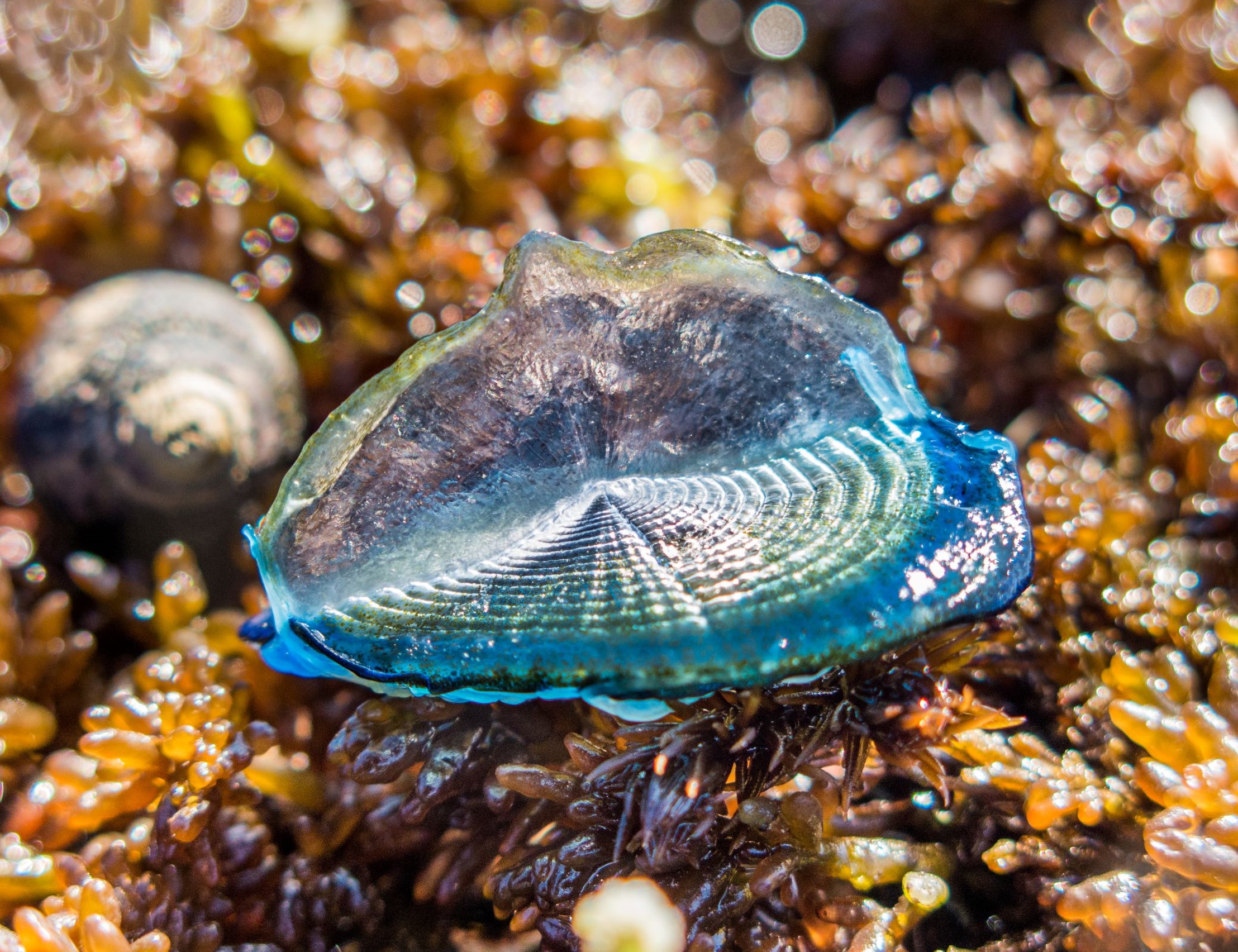
Other-Worldly Creatures of the Sea
The world’s ocean is full of wondrous creatures – from the smallest plankton to the largest whale and everything in between! Many of the ocean’s rarest and most unique inhabitants that look like they come from another world don’t get nearly as much attention as the cuter and more charismatic ones. Let’s celebrate just of the few amazing, mysterious, and downright odd animals:
Wolf Eel

Wolf Eel: Despite its name, this one is actually not a true eel at all – it’s a long, skinny fish! How do we tell the difference? This one has pectoral fins behind its head, a characteristic of fish and not marine eels. The wolf eel is gray with spots and dark vertical bands, which allows them to blend in perfectly with the dark dens in which they reside. When fully grown, these critters can reach a length of eight feet, and they have notoriously strong jaws and have sharp, spiky front teeth used for quickly grabbing unsuspecting prey that swims by. Despite their less-than-friendly appearance, wolf eels are quite curious and are known to approach divers!
Siphonophore
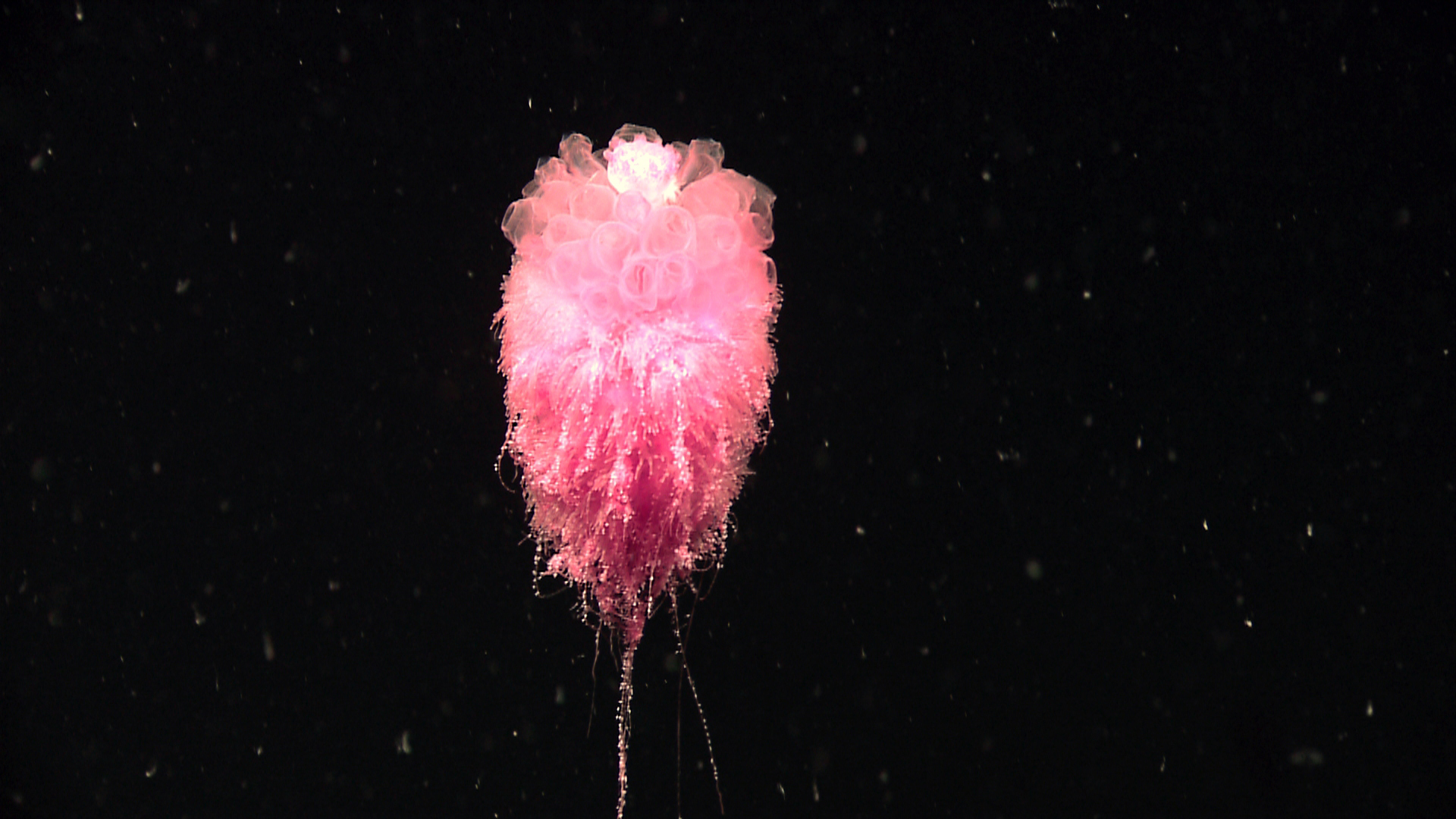
Siphonophores: Siphonophores are invertebrates commonly seen in the open ocean but very rarely on shore as they are fragile and can’t survive wave action or physical features like sediment. They are similar to corals in that they form colonies that appear to be one organism – even though corals get all the glory, siphonophores are more complex, specialized, and organized. Siphonophores are born with a single body and produce many smaller bodies through asexual reproduction. The smaller bodies remain attached to the parent body and develop so they can take care of highly specialized tasks like feeding, reproduction, or buoyancy. The most notable of their bodies are their feather-like tentacles that look like plumage, which they use to trap prey.
Flapjack Octopus
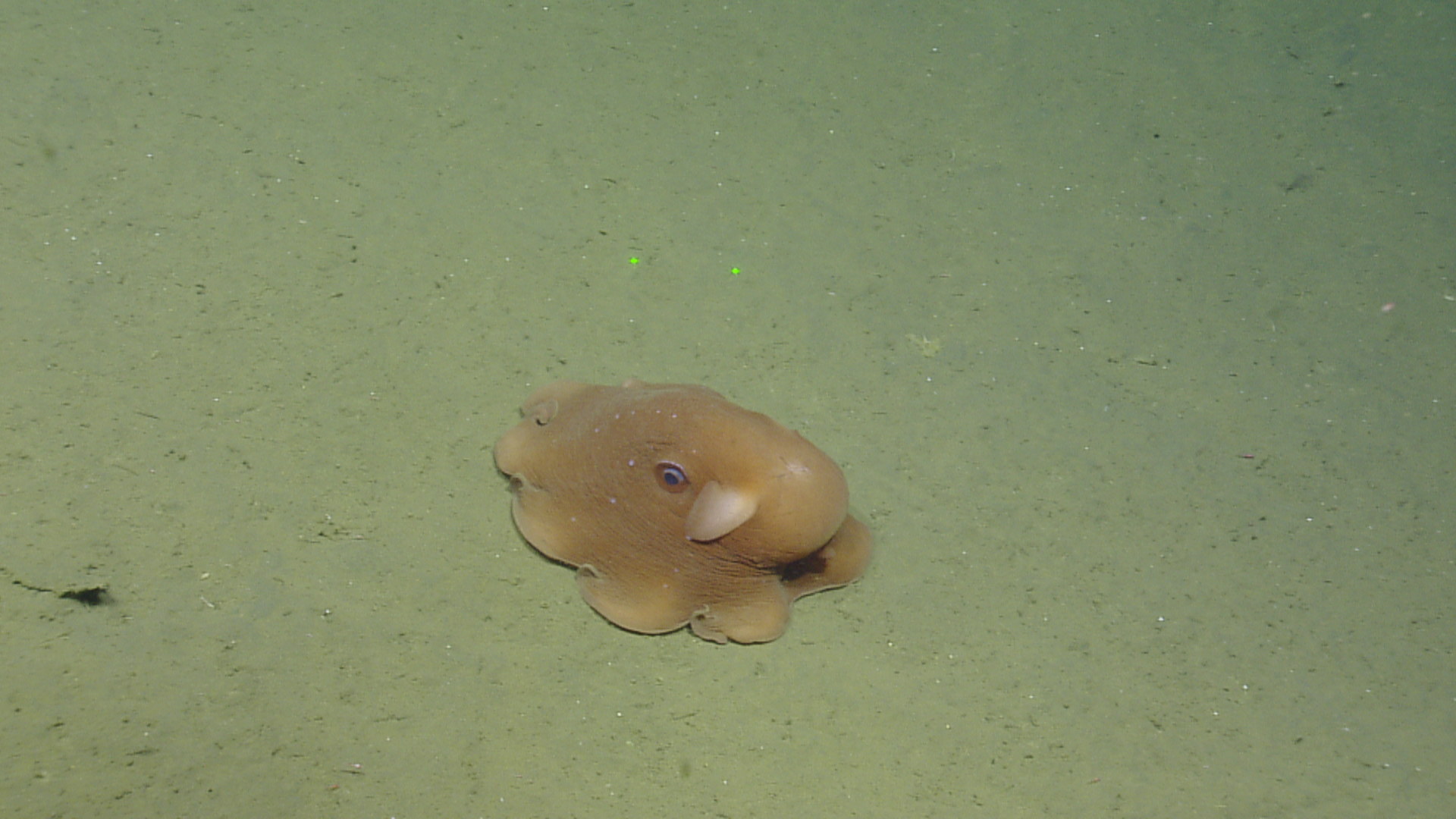
Flapjack Octopus: The flapjack octopus is one of the more rarely observed critters on this list. It is a deep-sea species that is red or orange in color with a flat body and wing-like fins that make it appear as if it’s flying through the ocean; its body color and shape earned it the nickname “flapjack devilfish”. Part of a small group of octopuses called cirrate octopuses, which are characterized by a small internal shell and two fins on their head; they are also referred to as umbrella octopuses as their tentacles and fins resemble that framing of an umbrella. Scientists know very little about this animal’s life history because of the difficulty of deep-sea species research and its elusive nature.
Nautilus
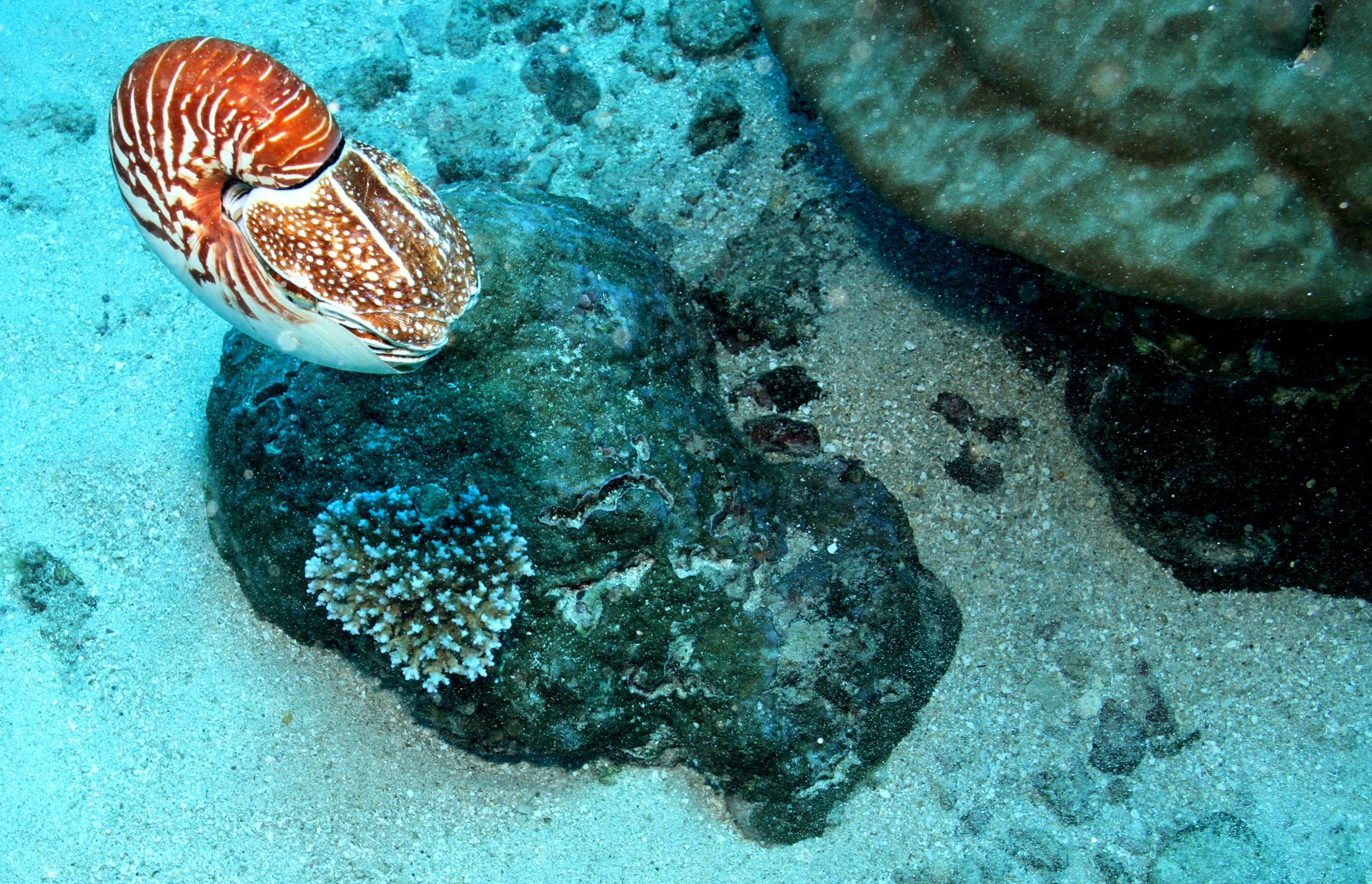
Nautilus: This mollusk is one of the more well-known of the animals on this list. They are characterized by a soft body similar to that of squid and octopuses (their genetic cousins) housed inside a distinct looking hard external shell; nautilus are the only cephalopod species known to fully develop a shell for protection. This critter has large eyes but poor vision as its primitive eyes lack lenses (structures that refract light to the retina). With more than 90 sucker-free tentacles, they use grooves and ridges along their “arms” to grip prey and carry it to their parrot-like beak that can crush even the hardest of shells.
By-the-Wind-Sailor Jelly

By-the-wind sailor jelly: Similar to the Portuguese Man O’ War in appearance, this jellyfish – Velella velella – is a single organism that has a gelatinous, sail-like structure atop its body that it uses to catch wind and propel itself through the water. By-the-wind sailors live in nearly all parts of the world’s ocean and drift at the mercy of the sea breeze, even if it washes them to shore en masse, which is a common occurrence along the Oregon coast in the Northwestern United States. Despite being a commonly observed species, scientists know little about their life history.
Big Red Jellyfish
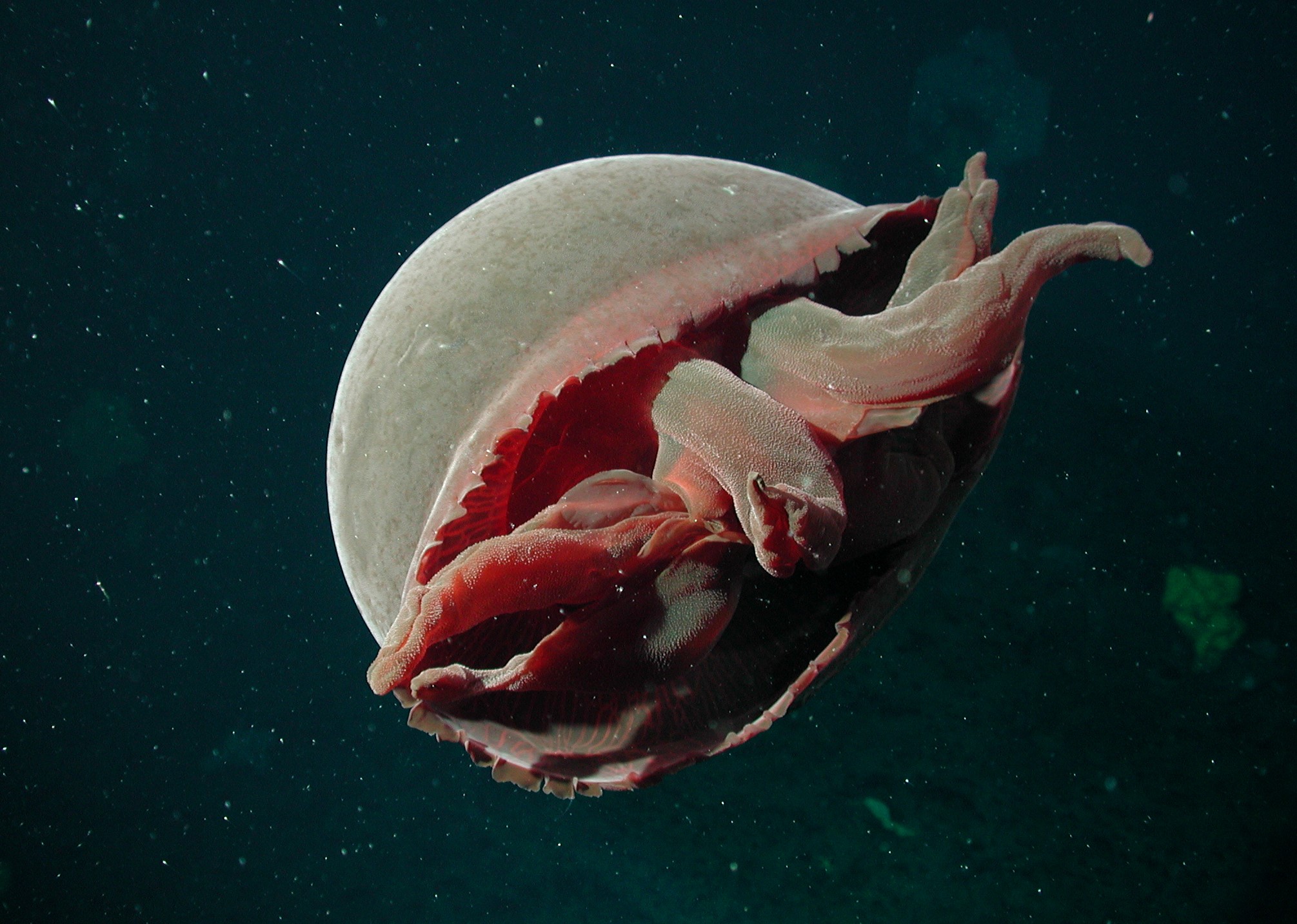
Big Red Jellyfish: The big red jellyfish – Tiburonia granrojo – is one of the world’s largest jellyfish species, reaching diameters of more than three feet. This species is distinct from other jellyfish in that it has fewer wide and thick oral arms instead of many skinny, flowing stinging tentacles. This jellyfish is deep red in color, lives in the cold, deep waters of the Pacific Ocean, and has been observed off America’s west coast, Baja California in Mexico, Hawai’i, and Japan.
